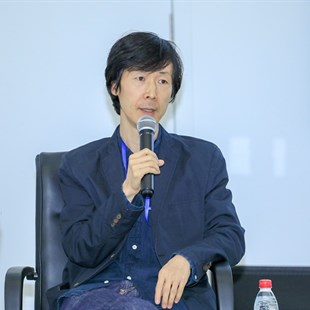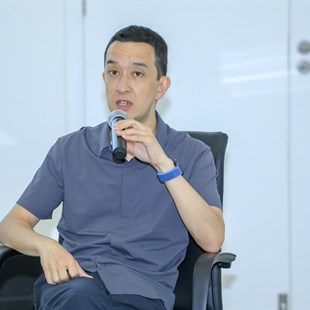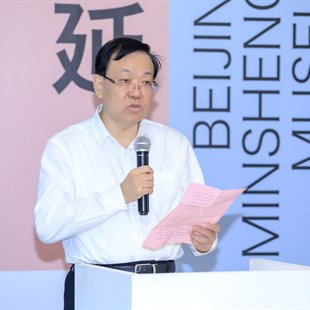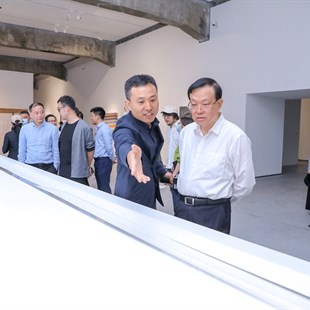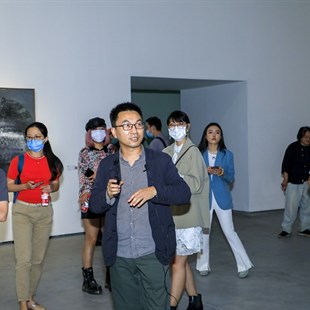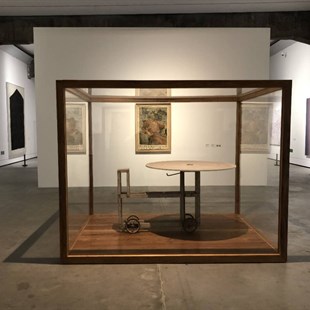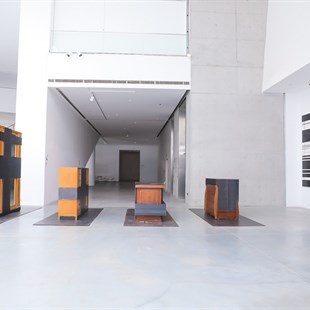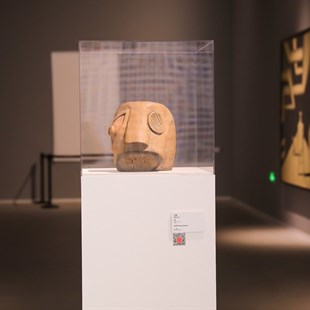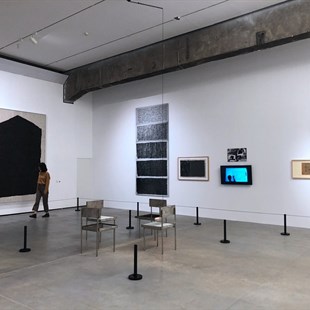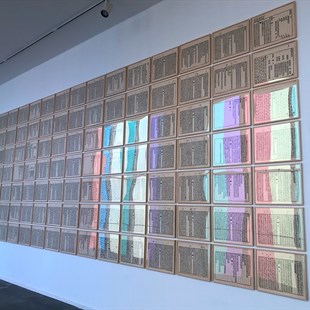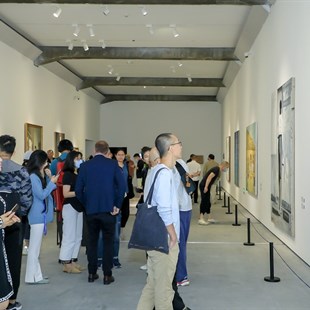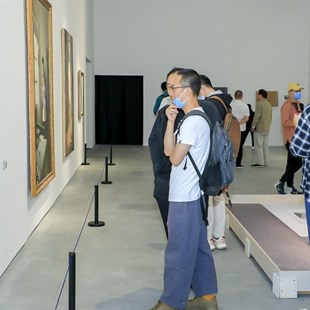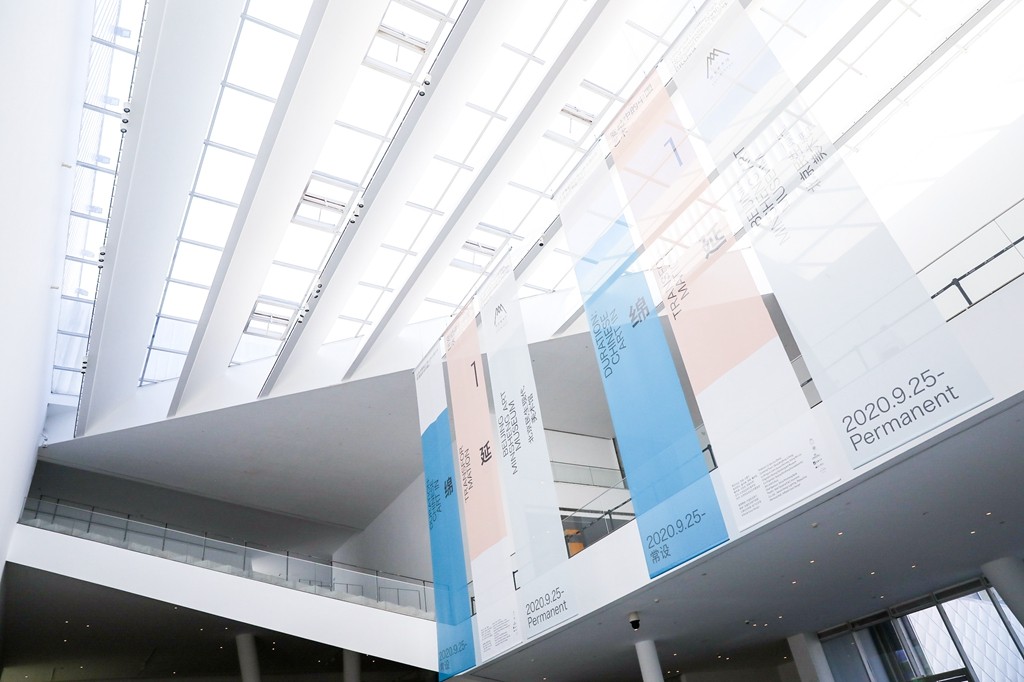
“Duration(La durée) is the continuous progress of the past which gnaws into the future and which swells as it advances. And as the past grows without ceasing, so also there is no limit to its preservation.”
—French philosopher Henry Bergson
The contemporary art that has gradually emerged in China since the end of the 1970s, as described by the French philosopher Henri Bergson is like a continuous and constantly changing life form, driven by a strong internal impulse. As Chinese contemporary art has been rushing forward and changing, it has never stopped but it is always full of differences. Beijing Minsheng Art Museum has officially launched the permanent exhibition of Chinese contemporary art to the public on September 25, “Duration: Chinese Art in Transformation”, which not only filled the gap of the permanent exhibition of contemporary art in China, but it also tried to sort out and reflect the continuous process of Chinese contemporary art development from the perspectives of five curators. As a “growing” exhibition, the exhibition itself can also be regarded as an experimental sample presented in art history, for it is“an exploration and experimentation with infinite possibilities of changes, and a concept of continuous growth of the exhibition itself as a work of art.”
In the past ten years, Minsheng Art Museums have successively launched “Thirty Years of Chinese Contemporary Art: Paintings 1979-2009” and presented “20 Years of Chinese Video Art 1988-2011”. From the perspective of individual artists, they have also introduced a solo exhibition by contemporary artists such as Zhang Peili, Geng Jianyi, Ding Yi, Liu Wei, Xu Zhen and so on.“Duration: Chinese Art in Transformation” launched at Beijing Minsheng Museum is co-curated by five curators and theorists or researchers who have rich experience in video art, exhibition planning, art history research, institution establishment and museum management, theoretical research, etc. They are Dong Bingfeng, Lu Mingjun, Colin Siyuan Chinnery, Wang Minan, and Li Feng, Director of Beijing Minsheng Art Museum. They jointly planned and selected 95 works (groups) by 91 Chinese artists. This will not be a fixed or static exhibition. The list of exhibited artists will constantly change and their works will also constantly change. Although the curatorial team has repeatedly emphasized that this is not an exhibition attempting to write on art history, they have extracted six key words from the research and arrangement of Chinese contemporary art history: Time/Space, Bio/body, Everyday life, Material, Performance, Affection, and the sections of this permanent exhibition will be supplemented and adjusted as the exhibition and research continue.

“The Process of Breaking the Hierarchy While Continuously Encoding and Decoding”
Wu Guanzhong, a well-known contemporary Chinese painter and art educator, preserved the comprehensive draft when he created the large-scale mural of “Yangzte River Miles Chart for the Beijing Hotel” in 1973-74. It is a milestone work in the history of Chinese oil painting and it can be taken as the start of this exhibition. Curator Colin Siyuan Chinnery believed that, in the complicated historical context, this work symbolizes the artist’s return to formal beauty and an abstract exploration in “art for the sake of art.” Therefore, this work also has a special significance for the exhibition. Later, in 1980 Wu Guanzhong published “About Abstract Beauty” in Magazine Fine Arts (1980:10). The article expressed concepts that “abstract beauty is the core of formal beauty, and people’s love for formal beauty and abstract beauty is instinctive,” and so on. It further triggered the discussion of abstract beauty and abstract art in the art world.
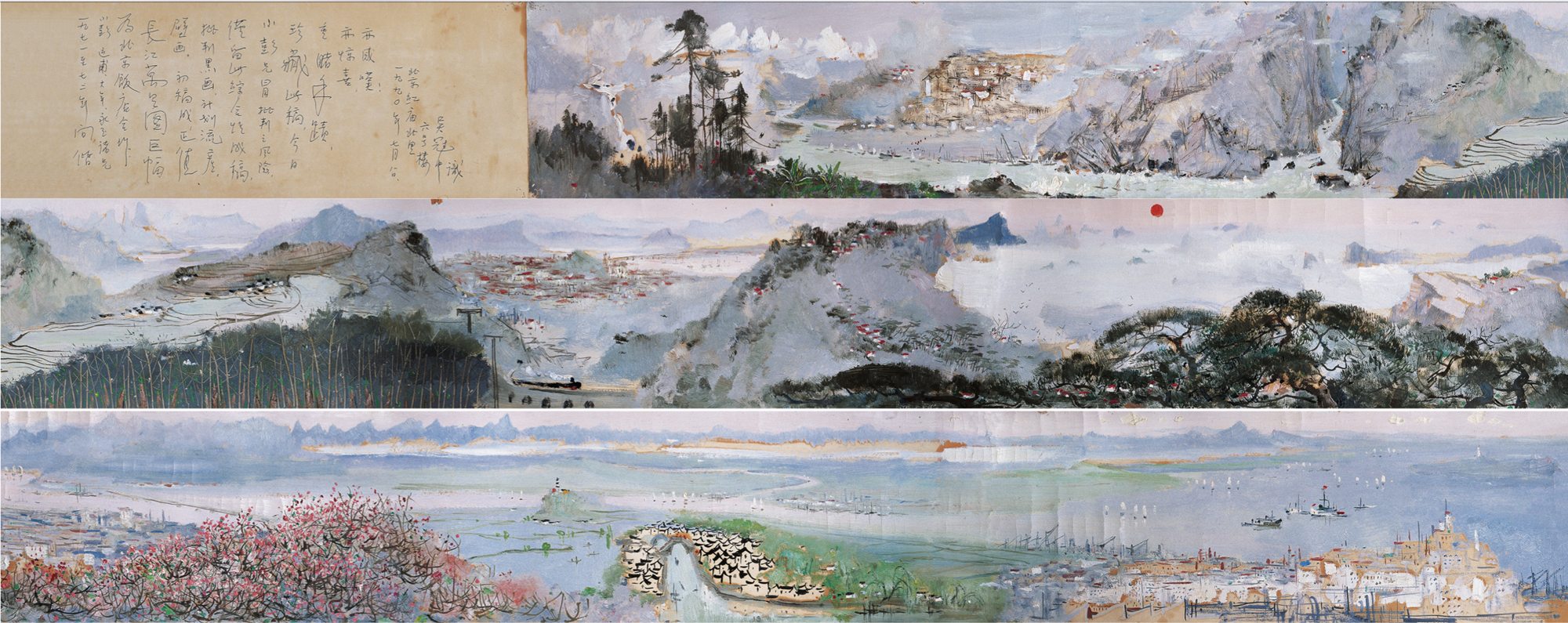 Wu Guanzhong, Yangzte River Miles Chart for the Beijing Hotel, Oil on paper 22.5×509cm 1973-1974 Collection of Fine Arts Institution of China Minsheng Bank
Wu Guanzhong, Yangzte River Miles Chart for the Beijing Hotel, Oil on paper 22.5×509cm 1973-1974 Collection of Fine Arts Institution of China Minsheng Bank
What does time/space mean for artists? This is an abstract and infinite concept. From the concrete to the abstract, artists open up the dimensions to convey their thoughts. In 1979, the free and bold artistic ideas embodied in the “Stars Art Exhibition” also became an important coordinate in the history of contemporary Chinese art. “We cannot cut off time from here. The shadows of the past and the light of the future overlap, this has formed our multiple living conditions today,” Huang Rui wrote in the preface for the “Star Art Exhibition.” Combining accidents with the contemporary, the abstract exploration of time, space and visual symbols is also embodied in Ding Yi’s construction of the abstract time and space “cross”, Yu Youhan’s repeated and developed the endless “circles” and “shou paint” by Wang Guangle which combines time and layering emotions that accommodate various experiences.
As the founder of the most subversive art genre “Xiamen Dada” in the 85’ art trend, Huang Yongping’s “The Mimic Painting Done in 1980 Beijing Washed in the Washing Machine for 5 Minutes on December 1, 1987” combined traditional creative methods and modern artistic concepts. When a painting is transformed into “an event” through behavior, this work also reflects and echoes the declaration of “Xiamen Dada”: “Do not eliminate the unrest of artistic life.” “Large Turntable with Four Wheels” is also one of Huang Yongping’s masterpieces of artistic concepts in the form of installation. For Huang Yongping, the big turntable is an accidental installation. “If my creation is not independent of me, it cannot be called creation. Independent creation is a creation that depends on the accidental after the functions of the eyes and brain are restricted....”
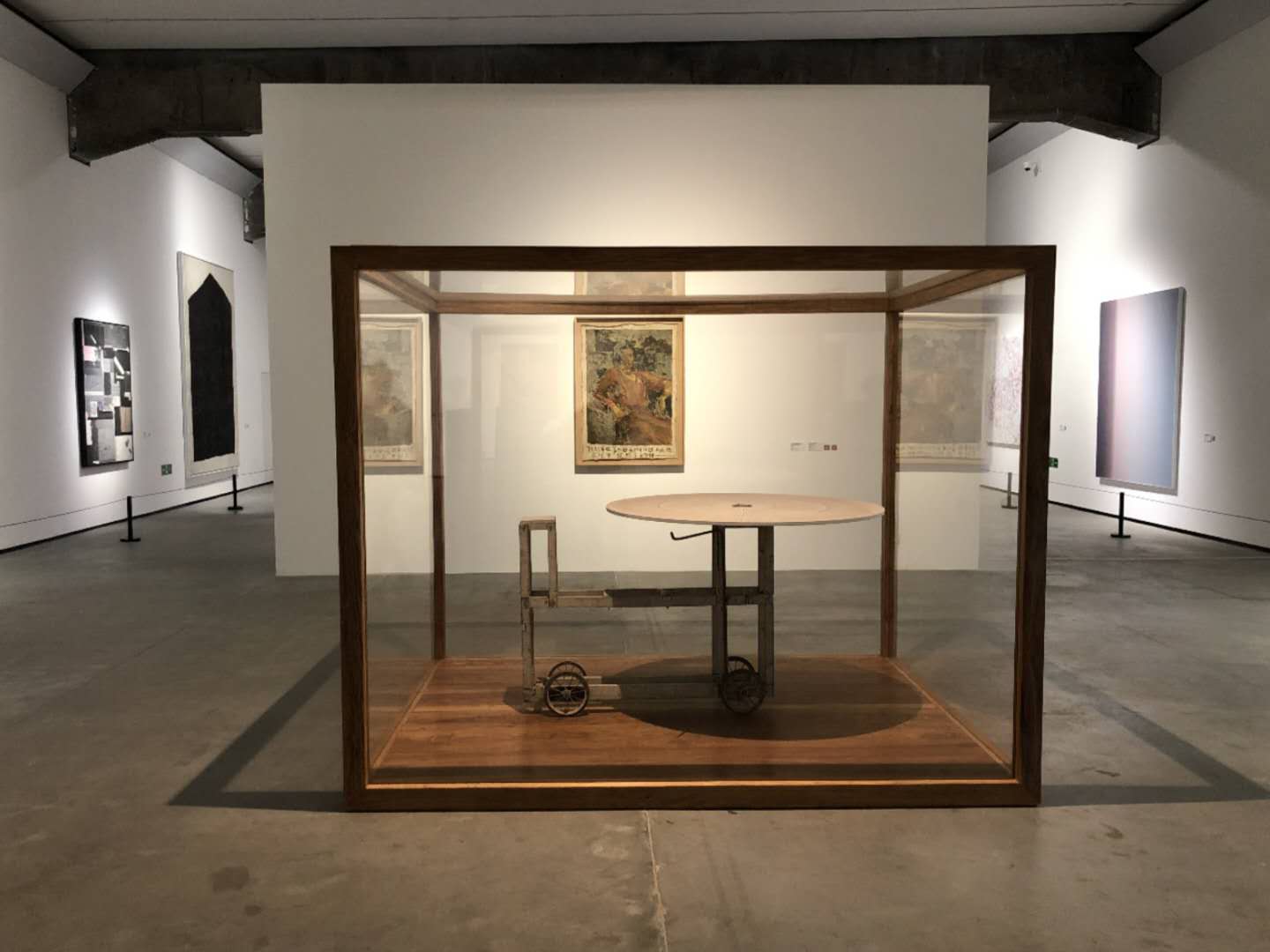
Exhibition View of “Duration: Chinese Art in Transformation”
From form to symbol, then to language exploration, Chinese contemporary artists have gradually adopted more diversified formal languages to explore the relationship among themselves, time and space. Wang Gongxin’s dynamic installation “Unseatble” created in New York, USA, and Qiu Zhijie’s work “Copy Orchard Pavilion Preface 1000 Times” in the early 1990s, Yang Jiechang’s “A Feudal Vassal’s Jade Memorial Tablet”, Liang Quan’s “Meteor Shower” and Hao Liang’s “Eight Views of Xiaoxiang—Snowscape” with modern elements constitute a dialogue and care for each other and they also embody the process of Chinese contemporary art to merge with traditional concepts.
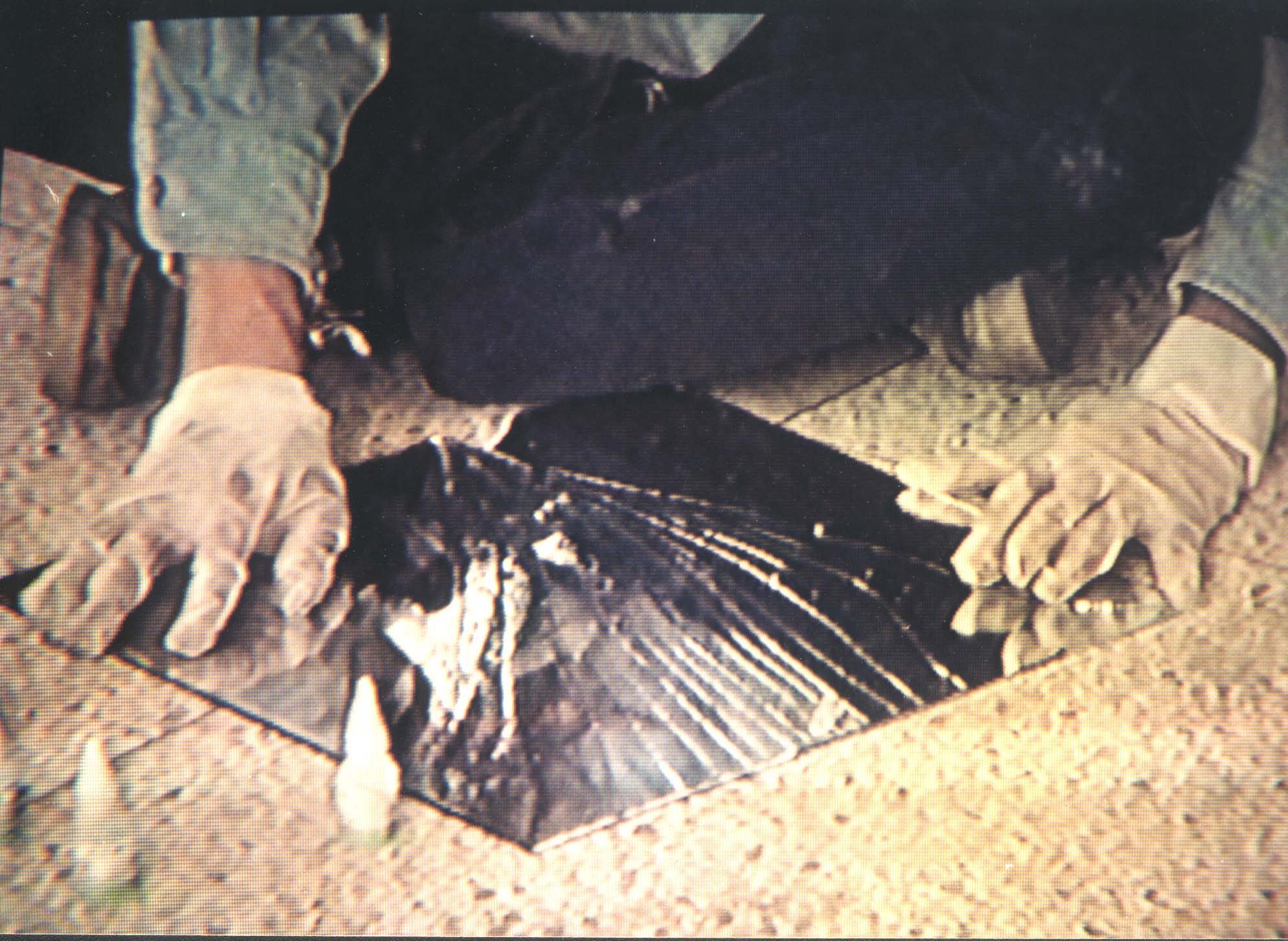 Zhang Peili, 30×30, single video 32'09'' 1988 Courtesy of SPURS Gallery
Zhang Peili, 30×30, single video 32'09'' 1988 Courtesy of SPURS Gallery
The earliest video art work in China, “30×30” by Zhang Peili, the “father of Chinese video art”, is also a landmark work in this exhibition. From the rubber gloves in the painting to the appearance of the actual use of video, with the abstract language of behavior, the artist visualized the continuous repetition of differences.
“From Thought to Body Expression”
The development and focus of Chinese contemporary art have also undergone a transformation from a concept to human existence. Yuan Yunsheng’s Draft of “Water-Sprinkling Festival—Extol Life” created for the Beijing Airport in 1979 caused unprecedented controversy and a sensation in contemporary art history due to the presentation of the body. The manuscript on display also conceals the human body. For the artist, “the appreciation for the beauty of the human body is the praise of freedom.” As the dimension of thinking continues to expand, more artists begin to explore the expressions of body and life.

Yuan Yunsheng, Draft of “Water-Sprinkling Festival-Extol Life”, gouache on paper, 33.9×198.6cm, 1979
After the reform and opening up started, more philosophical theories began to be introduced into China and also influenced young people of that era. Zhong Ming’s “He is himself-Sartre” was born under this background and the occasion of Sartre’s death. This piece of work also triggered controversy over “whether a painter should have a personality” in the Chinese art world and is regarded as a landmark work with the epochal characteristics. “Not only Sartre is ‘himself’, each of us should also become ‘Myself’”, which also reflects Sartre’s idea “Existentialism is a kind of humanitarianism.”
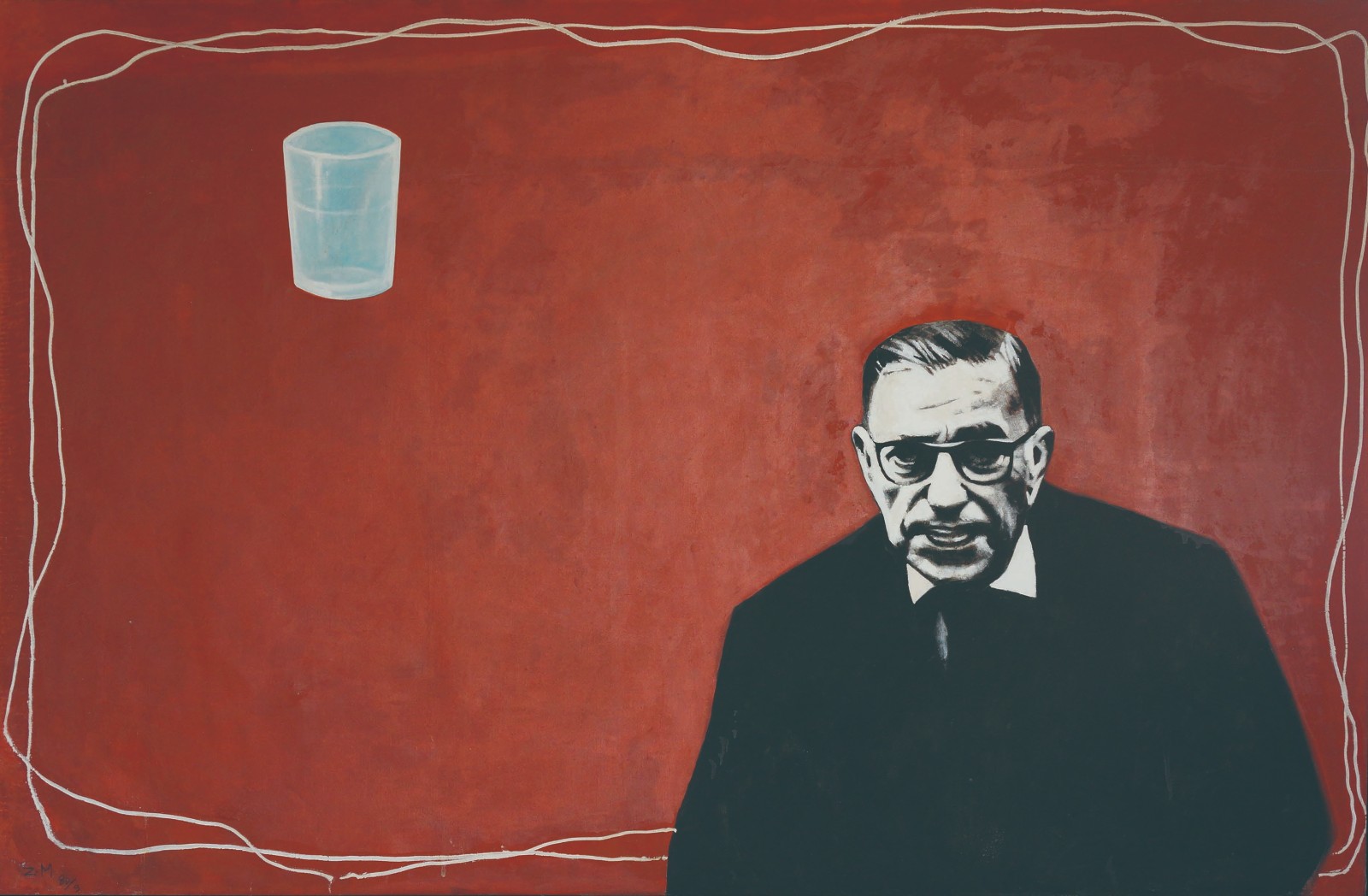
Zhong Ming, He is himself-Sartre, Oil on canvas, 110×170×3cm 1980 Courtesy of Museum of Guan Yi Contemporary Art Archive
In an age when the modern consciousness of Chinese society is gradually awakening and coming to life, Meng Luding’s oil painting “In the New Age—The Enlightenment of Adam and Eve” combines the image motif from the Western Bible with a Tai Chi plate, Buddhist statues and the gate of the Forbidden City. The characteristic Chinese elements symbolize the subversion of tradition and the fusion of Chinese and Western characters and “it ushered in all the Chinese modernist art” (commented by Zou Yuejin).
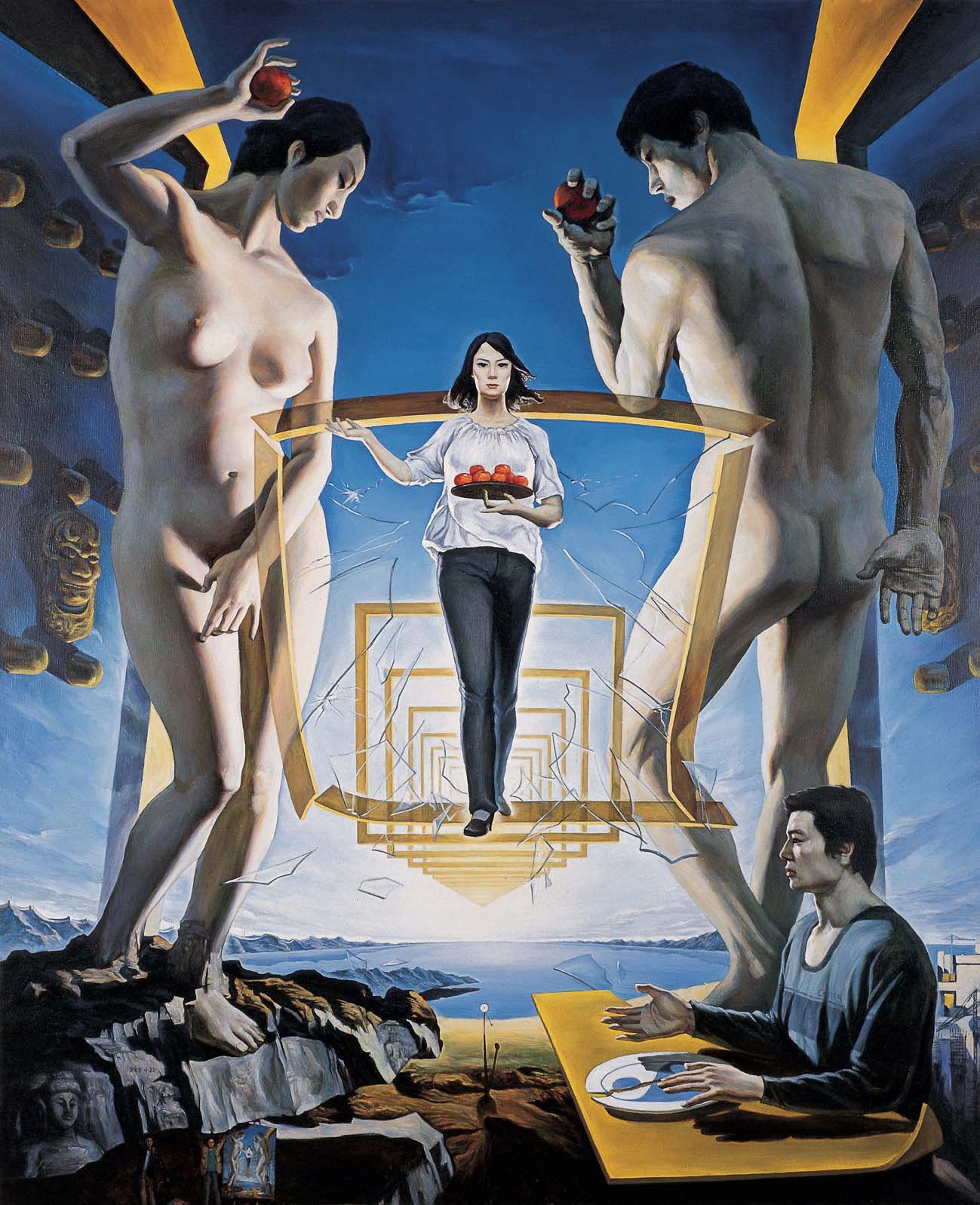
Meng Luding and Zhang Qun, In the New Age-The Enlightenment of Adam and Eve, Oil on canvas 196×164cm 1985 Collection of Taikang Insurance Group
The Chinese society in the 1990s went through the process of urbanization and entered an era of consumerism and it also brought new creative opportunities for artists, they thought about identity and looked for a position and recognition in international society. It also prompted artists to create a large number of experimental works in the fields of performance, photography, video, and concepts since the mid-1990s. Li Jinghu, an artist focuses on installations, incorporates his own understanding and interpretation of life into his works. When the light is projected onto the smooth surface of the sculpture, the cold “things” are given a temperature and become “people” and form “people”.
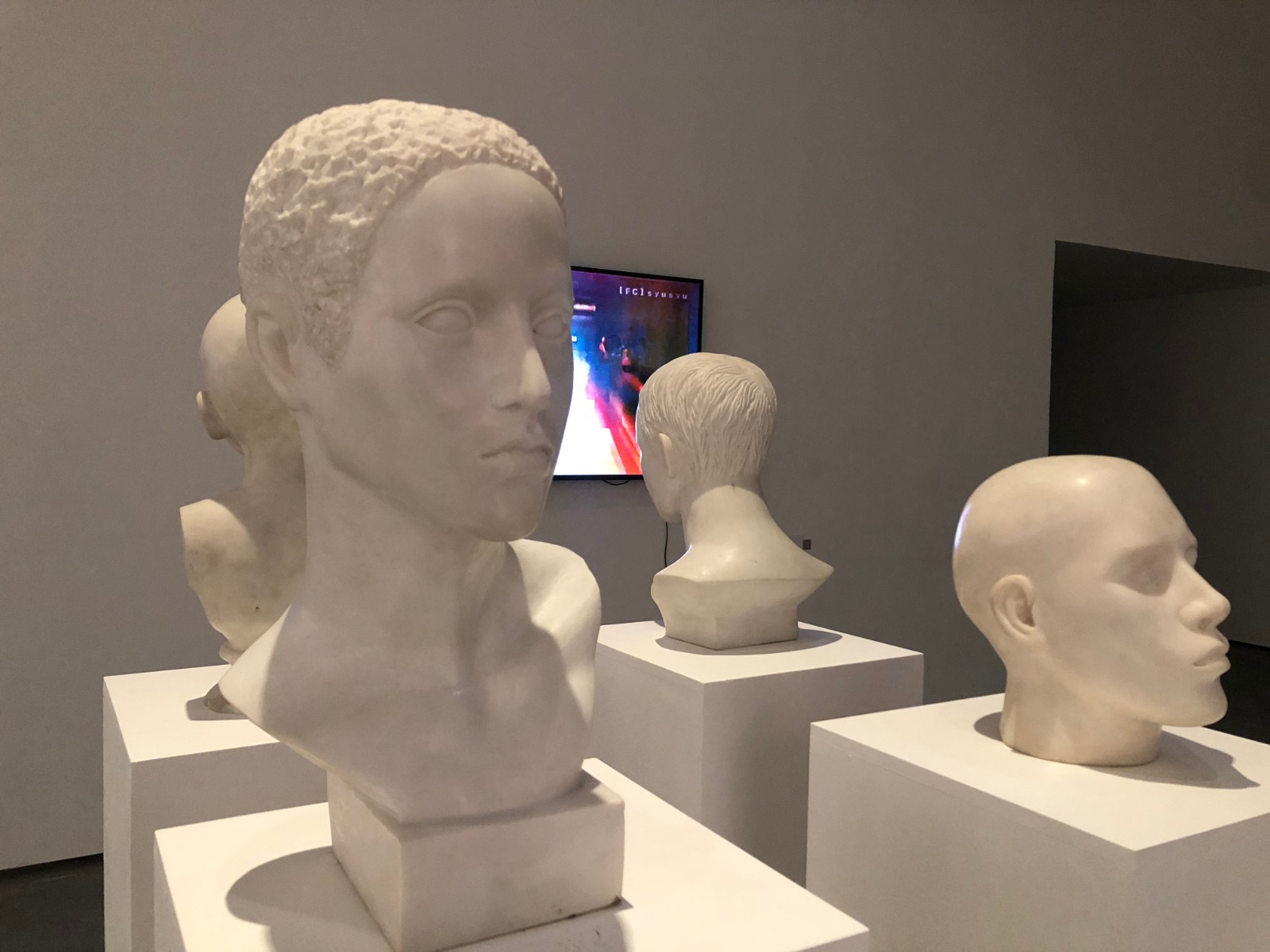
Li Jinghu, People, Sculpture White marble, 38×19×16cm, 41×22×25cm, 35×25×27cm, 25×17×23cm Courtesy of Magician Space, Dongguan Studio
“Facing the Realistic Locality”
When China was experiencing social change and ideological leaps and turmoil in the 1980s, the theme on “trauma” and “social critical realism” once occupied the dominant position in artistic creations. During this period, some artists gradually shifted the focus of their creations to daily life and exploration of the identity and meaning of family and personal themes. Chen Danqing’s “Going to Town No.3” was created during this period and shows a scene that seems to be common and quite symbolic in life. Whether it is ordinary people in daily life or China undergoing changes, on the road of development and change, they were also full of curiosity and yearning for the unknown and changes.
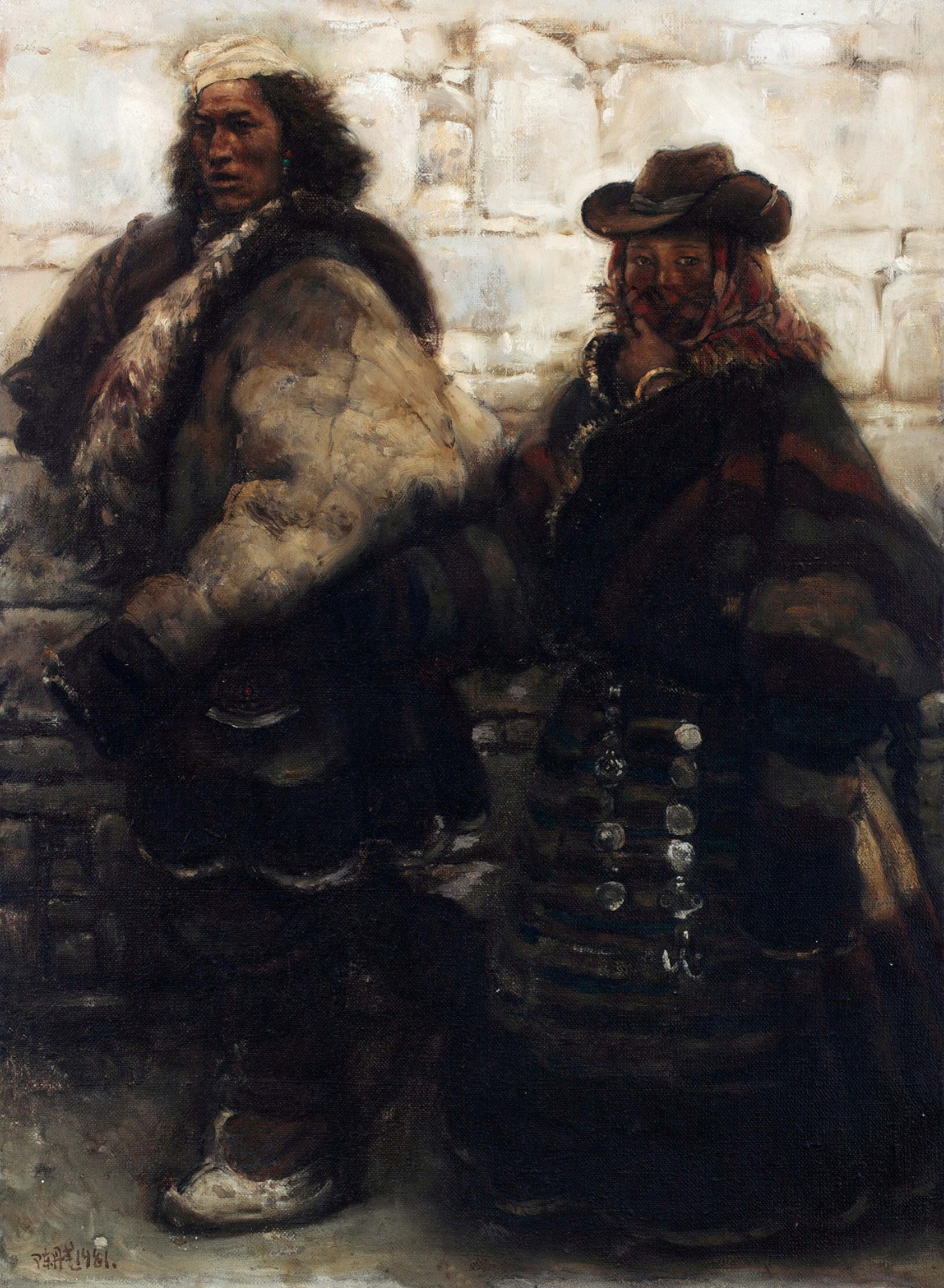
Chen Danqing, Going to Town No.3, Oil on canvas 75×56cm 1981 Private Collection
Wu Shanzhuan was one of the first group of artists who incorporated Chinese discourse elements into pop art creations. He created the “red humorism” with the integration of the most daily language and related context, and he also foresees the prevalence of consumerism and pop culture in the 1990s with an artist’s keenness. Created in 1985, “Today No Water” is reminiscent of the slogan culture in the past and then gradually evolved into the creation of drawings, installations, novels, poems and thought experiments.
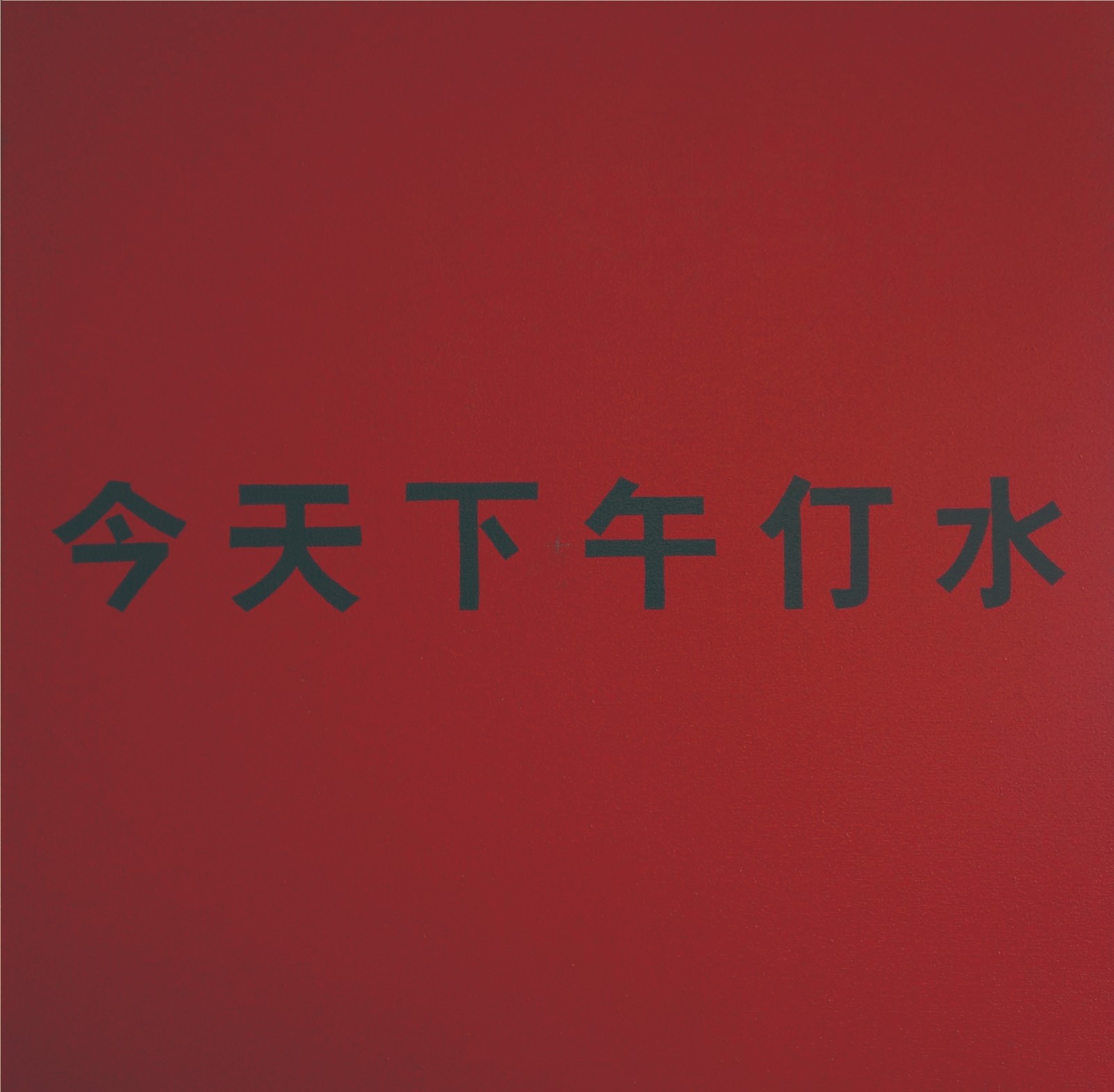
Wu Shanzhuan, Today No Water, Paint on canvas, 102×102×3cm 1985 Private collection. Courtesy of Museum of Guan Yi Contemporary Art Archive
As one of the most important representatives of China’s post-89 new art trends, Fang Lijun’s “bald head rogue” image created since 1988 also metaphors the state of existence characterized by self-deprecating and banter from the late 1980s to the first half of the 1990s. Under the artist’s sober and realistic brushstrokes, the characters convey a strong purpose and material quality. When the original social values of Chinese society gradually collapsed and became out of control in the 1990s, Liu Wei also expressed his own ridicule, playfulness and rebellion in “Self Portrait” created in 1992. The visual text of “Cynical Realism” derived from this, presenting his personal characteristics, “corrupted landscape”, also echoes the state of hesitation and confusion shown in subsequent works.

Fang Lijun, 1990, Ink on paper 99x102cm 1990 Private Collection
“The Changing Material, Emotion and Performance”
In the late 1980s, Xu Bing began to create a “pseudo Chinese character”" in combination with the formal language of prints and printed thread-bound books and long scrolls of “Book from the Sky” through woodblocks and ancient Chinese movable type printing. These seemingly familiar but unreadable characters as artistic symbols and materials are not only a subversion and ridicule of the recognizable and interpretable real world, but they also reflect on the constraints and shackles formed by texts and characters.

Xu Bing, Book from the Sky, Mixed material Variable size 1987 Image courtesy of Xu Bing Studio
The conceptual art work “Tactile Sensation” co-created by Wang Luyan and Gu Dexin in 1988, uses 16 black and white photographic papers to mark the environment, conditions and physical state that the human body can perceive, and it explores the origin and boundary of conceptual art in the form of language description. As the artists expressed: “The goal of reason and the other side of sensibility are insurmountable, and the world touched by the body is very different from the thing corresponding to the concept. “Tactile Sensation” changes the material object “touched” into a spiritual object, so it is destined to be platonic.”
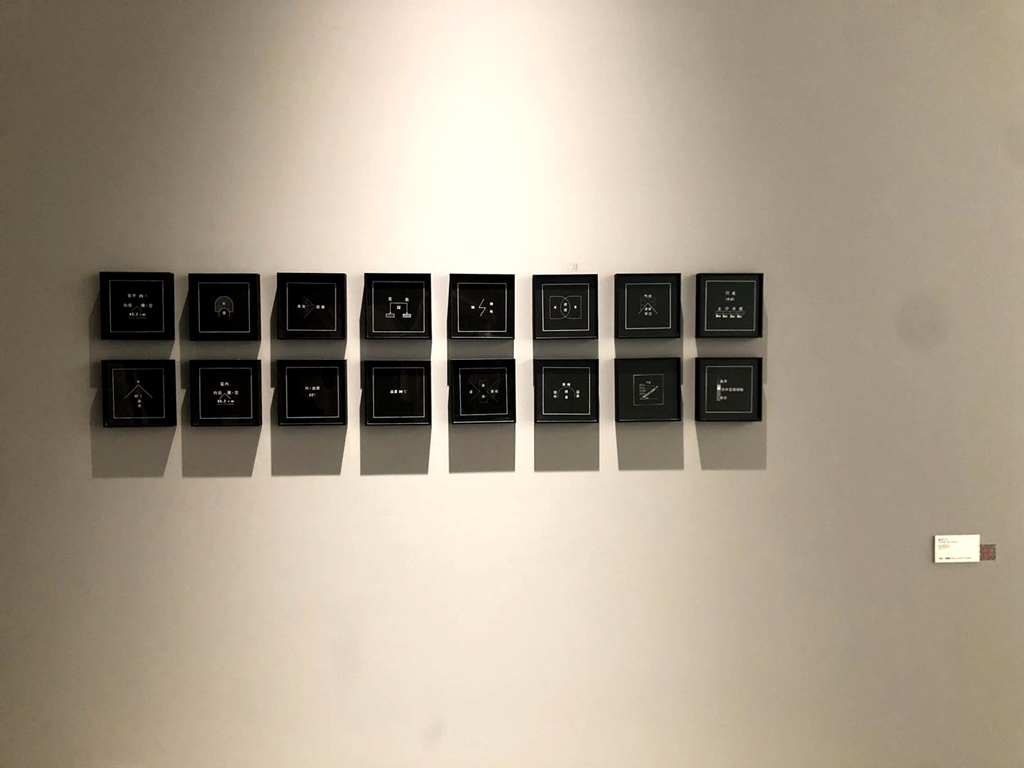
Wang Luyan and Gu Dexin, Tactile Sensation, photographic paper, 16.5×16.5cm×16 1988
Video games have brought a profound influence to a generation of artists in China, and Feng Mengbo is also one of the most representative artists. Game elements and symbols have not only become the most common themes in his creation, but they also made him create a personal encyclopedia. “The Big Collector” project, as the New York writer Andrew Solomon commented, “His intelligence includes not only his various creative styles, but also his multiple sensitivities. He can store his desires in the computer age, in his cold beauty; he can fill his vision of the future with nostalgia for history.”
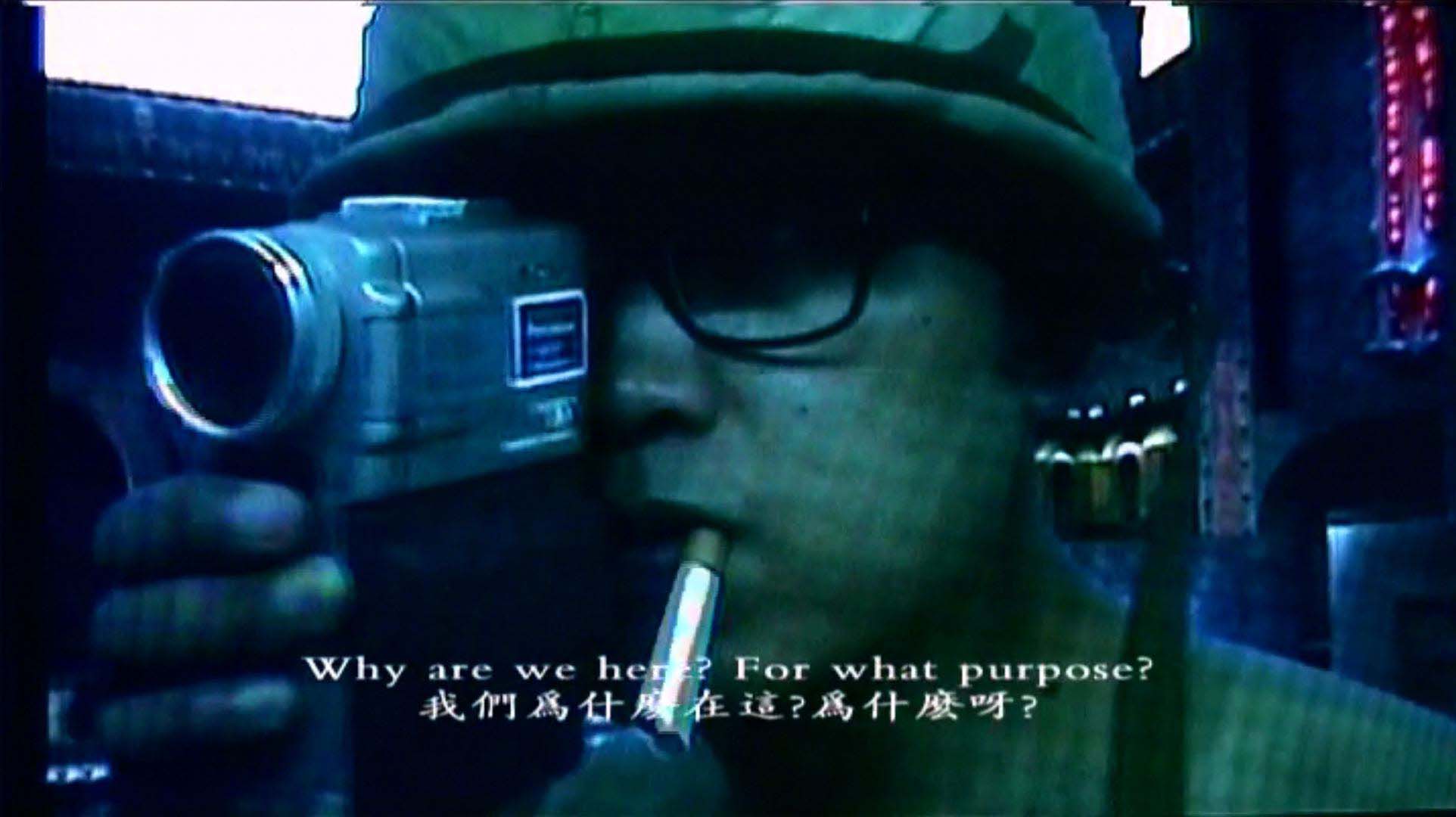 Feng Mengbo, Q3, video, color, sound 32', 1999
Feng Mengbo, Q3, video, color, sound 32', 1999
“People’s Village: The Second Life City Project” is an animated video work of Cao Fei. The appearance of People’s Village has the characteristics of a contemporary Chinese city. In the dynamic imagery space, there are Chinese elements of contemporary life such as pandas, Tiananmen Square and Beijing Erguotou. Presented in dramatic images, as the artist herself stated: “It is a series of highly contradictory, mutually integrated images, full of ridicule and questioning, and at the same time full of extreme entertainment and political consciousness.” Among them, the layering and intersection of space, physical space and imagery space symbolizes the rapid change and fusion of contemporary Chinese society.
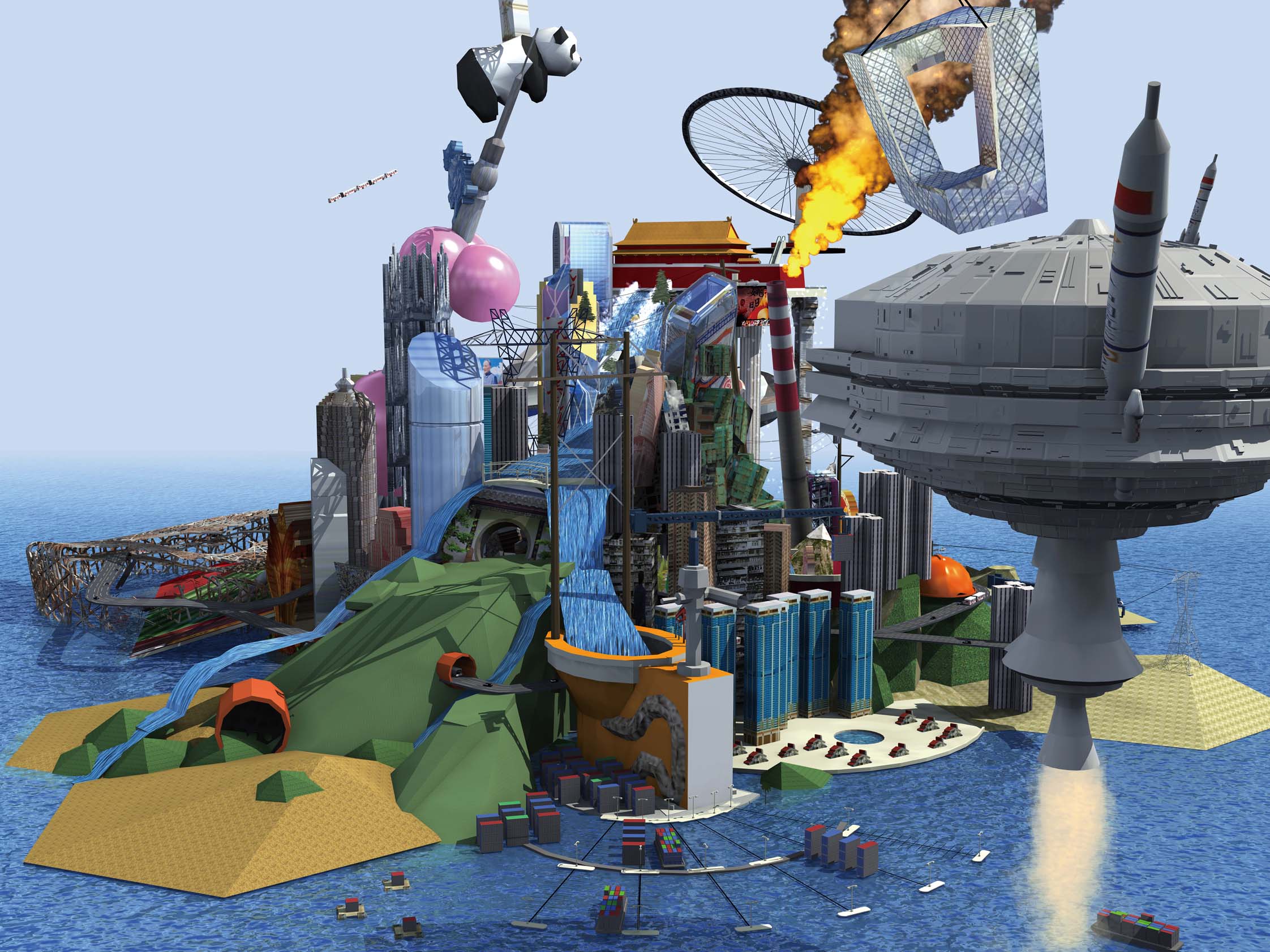 Cao Fei, People’s Village: The Second Life City Project, animation, 5'57'' 2009
Cao Fei, People’s Village: The Second Life City Project, animation, 5'57'' 2009
Ma Liuming, who lived in the “East Village” at the end of the twentieth century, was also one of the earliest artists in China to engage in transgender performance art and photography. By constructing a new fictitious identity for himself, “Fen-Ma Liuming” challenged people who rely on so-called exterior elements such as clothing. The judgment of the individual based on cultural characteristics provides the viewer with “comprehensive enlightenment on the harmony and contradiction between human nature and the social environment” (the artist’s words).
With the integration and influence of multiple cultures in the context of globalization, young artists in the 21st century have begun to explore the boundaries of media from artistic practices and challenge the limitations of perception and experience, explore the connection between life, living and perception. “As Simple As Clay” is a photographic installation art created by Liu Shiyuan in 2013. She started with mud, the most primitive material, and used different languages to search for the similarity to other objects to explore the visual equivalents and completed 1140 photos of the mud that are then combined to form her own creation.

Exhibition View of “Duration: Chinese Art in Transformation”
Conclusion
Although due to various reasons, there are still many important artists and works that have not been included for the first time in “Duration: Chinese Art in Transformation”, curators will continue to research and work hard based on the concept of “duration” in the future. As a starting point for studying the narrative, “Duration: Chinese Art in Transformation” attempts to start from the perspectives of art theory and historical change to show the reality of contemporary art developments in China and its continuous changes, when the sequence and clues of time are disrupted, the presentation of these works is not a stacking combination of art history specimens, but based on the past while presenting the living and flowing state to encounter the future with more possibilities and changes.
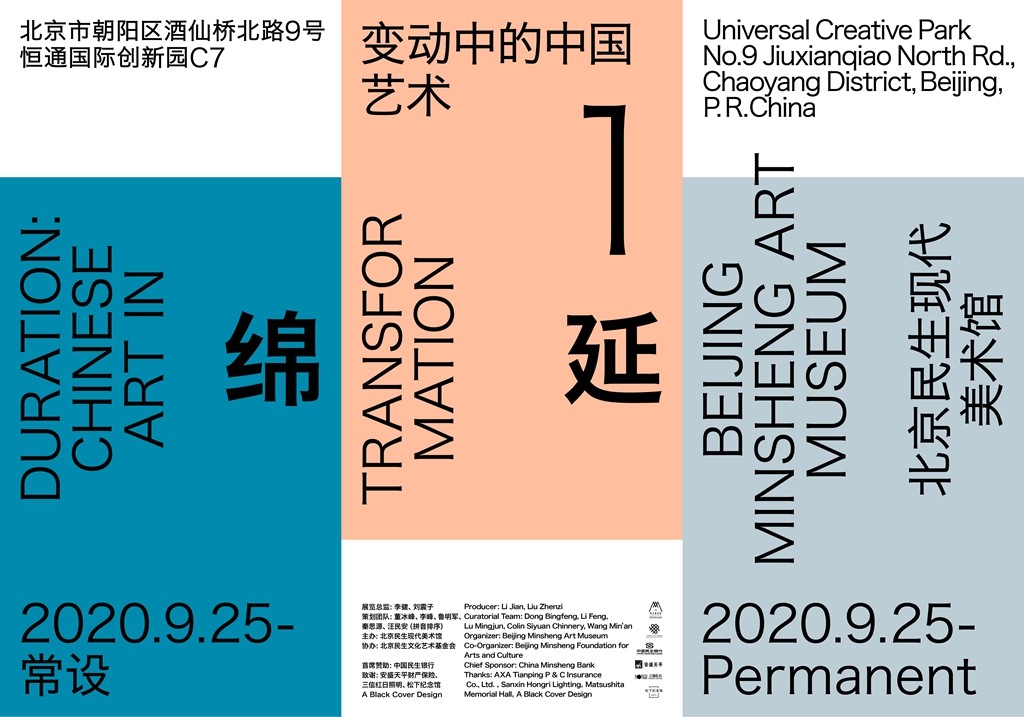
References:
1. Bergson, Henry. Creative Evolution. Authorized trans. Arthur Mitchell, Ph.D. New York: Henry Holt and Company, 1911.
2. Related texts on “Duration: Chinese Art in Transformation”, Beijing Minsheng Art Museum, 2020.
3. Interview with Artist Feng Mengbo, Who Turns Games into Art”, NOWRE, 2020:4
Edited by Sue/CAFA ART INFO
Image Courtesy of artists and Beijing Minsheng Art Museum





